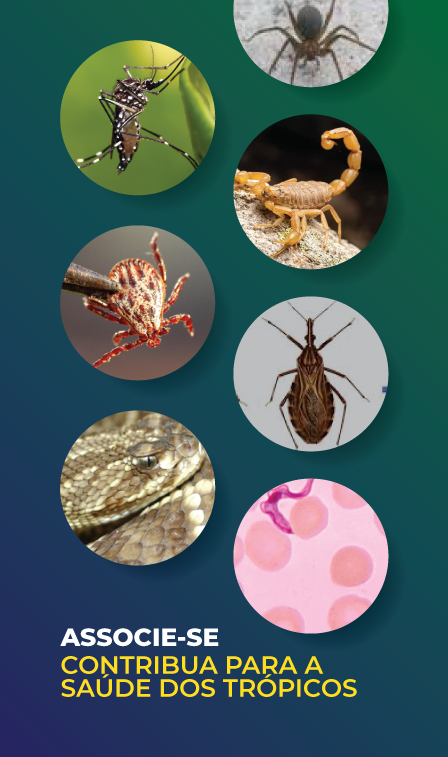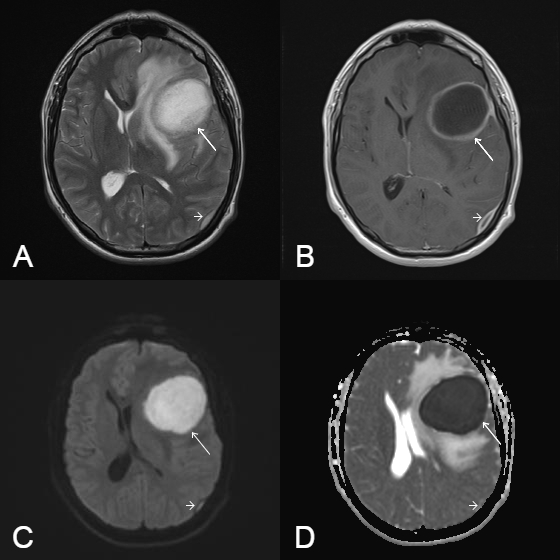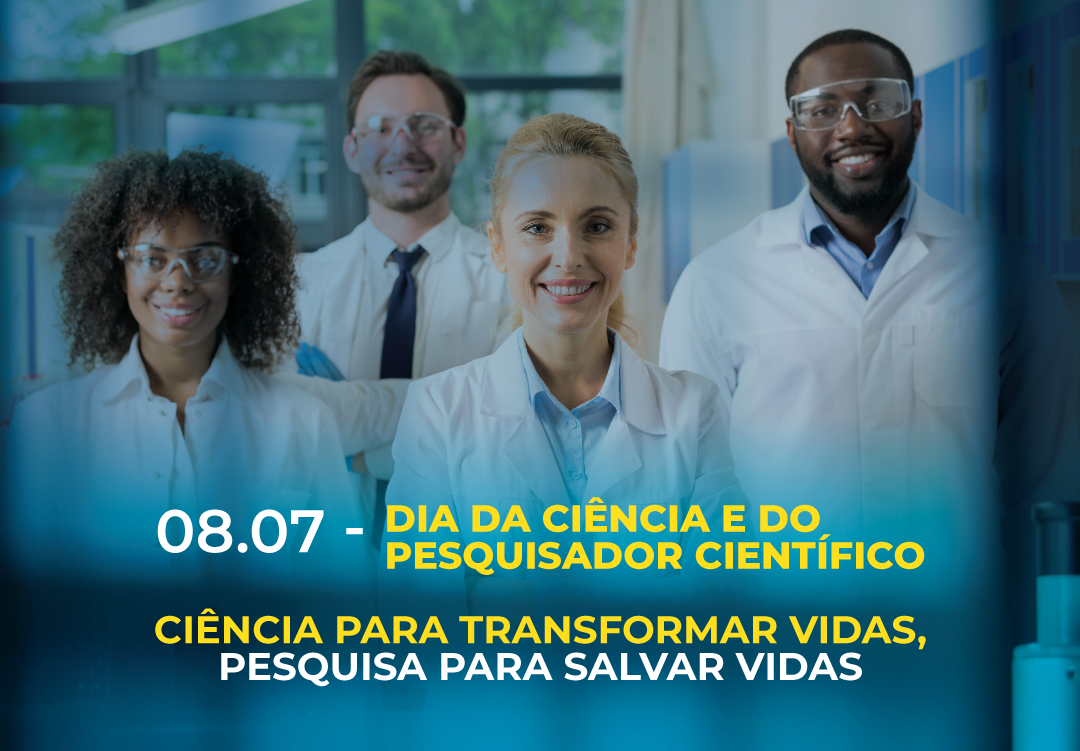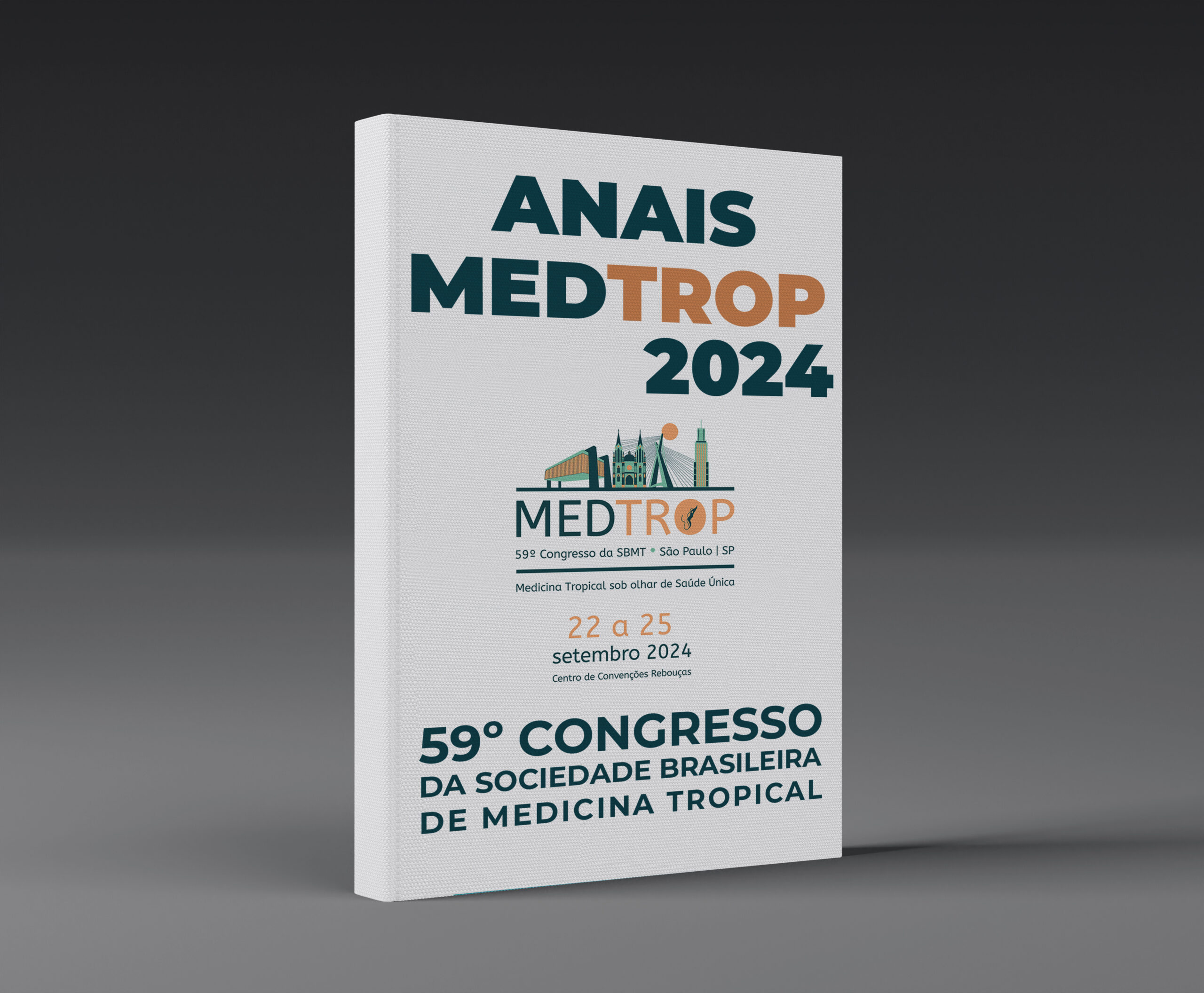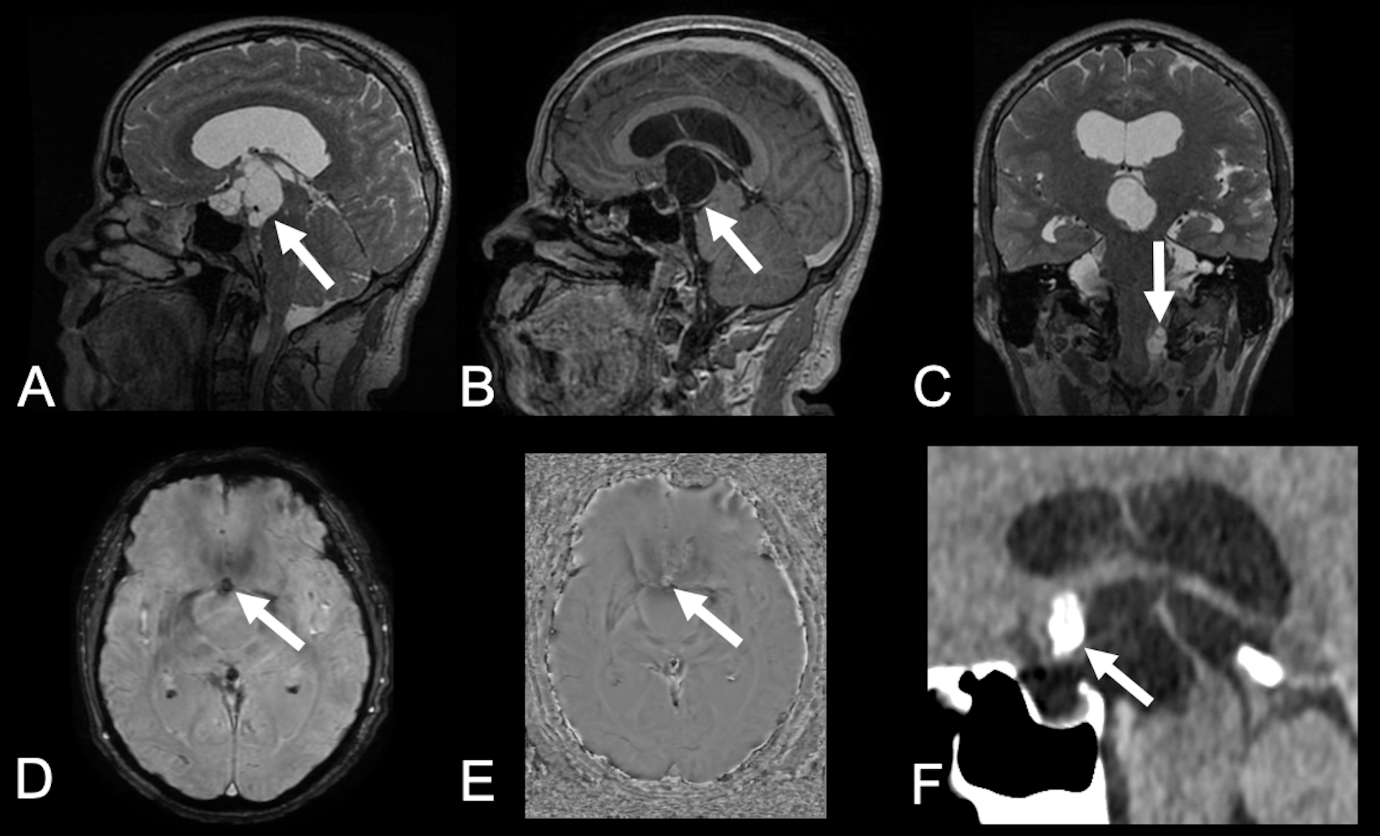
50º Congresso da SBMT: Acre inova e leva Mostra Pedagógica50th Congress of the BSTM: Acre innovates and presents Educational Show
Abordagens pedagógicas que valorizam a construção de conhecimento científico Educational approaches that value the construction of scientific knowledge
18/03/2014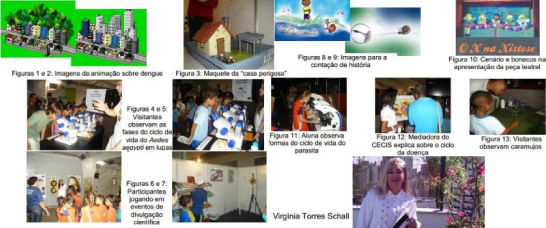
Acre deve receber a Mostra interativa de parasitos e vetores, apresentando aqueles com prevalência no estado discutindo suas determinações sociais e refletir sobre as condições locais de vida. Malária, doença de Chagas, febre amarela, leishmaniose, esquistossomose e dengue terão destaque
Abordagens pedagógicas que valorizam a construção de conhecimento científico contextualizado na realidade dos estudantes, favorecendo a observação direta e apresentando desafios que estimulem ações de prevenção de doenças e promoção – individual e coletiva – da saúde, associadas a reflexões críticas fundamentais para uma formação cidadã. Esse é o objetivo do projeto coordenado pela Dra. Virgínia T. Schall, pesquisadora titular do Centro de Pesquisas René Rachou (Fiocruz/MG) e coordenadora do Laboratório de Educação em Saúde e Ambiente (LEAS), que tem levado a Mostra a diversos municípios mineiros. Segundo a pesquisadora, que recebeu o convite para levar a exposição ao 50º Congresso de Medicina Tropical, que será realizado em Rio Branco, no Acre, de 26 a 30 de agosto, a ação complementa o ensino sobre saúde nas escolas – o qual tem sido avaliado como falho e até mesmo inadequado por publicações de seu grupo e de diversas equipes de pesquisa do País.
“Identificamos ausência ou abordagem inadequada sobre as parasitoses nas escolas do ensino fundamental e médio e decidimos desenvolver alguns recursos informativos e estratégias educativas”, observa Dra. Schall ao comentar que o público alvo são os estudantes da educação básica, mas, em eventos por onde a Mostra circula, é nítido o interesse do público em geral que, conforme ela atesta, faz perguntas que denotam o desconhecimento, a curiosidade e a surpresa ao saber de fatos que estão presentes em sua realidade e que não eram percebidos. Como exemplo, a pesquisadora cita a esquistossomose, perigo presente em pousadas de algumas áreas rurais de Minas Gerais. “O que surpreende moradores da capital, Belo Horizonte, os quais frequentam tais locais, é que eles reconhecem terem visto moluscos hospedeiros intermediários observados na Mostra e desejam saber mais e levar os impressos informativos”, assinala ao frisar que a ação é um exemplo de conhecimento novo, construído em um espaço não formal, que se torna útil para a saúde e a vida.
A Mostra no Acre
Para Rio Branco, a coordenadora do Programa adianta que vai levar a Mostra interativa de parasitos e vetores, apresentando alguns dos que têm prevalência no estado para que seja possível manter o propósito de discutir suas determinações sociais e refletir sobre as condições locais de vida. A princípio, está planejado focar na malária, doença de Chagas, febre amarela, leishmaniose, esquistossomose e dengue.
“Os hospedeiros intermediários e vetores serão apresentados fixados em placas de petri, em seus estágios de desenvolvimento, e os parasitas em lâminas a serem observadas em lupas e microscópios. Associados a isso, haverá maquetes que reproduzem as condições locais favorecedoras da reprodução dos animais e manutenção do ciclo das doenças”, salienta a pesquisadora ao antecipar que a intenção é deixar no Acre uma Mostra que possa ficar permanentemente em algum espaço público ligado à Secretaria de Educação, de Saúde ou de Ciência e Tecnologia. Seria um pequeno Núcleo para iniciar a montagem de um Centro de Ciências interativo, permitindo visitação o ano inteiro, para complementar o ensino sobre saúde na região.
A pesquisadora realça que as maquetes são interativas como, por exemplo, a da “Casa Perigosa” que pode ser transformada em “Casa Saudável”. Trata-se de uma maquete que reproduz ambientes propícios à reprodução do Aedes aegypti – mosquito vetor da dengue e da febre amarela. “Os estudantes utilizarão um regador para simular chuva sobre a casa e depois terão que organizar os recipientes de risco de modo que a casa se torne saudável”, explica ao ressaltar que essas ações simuladas têm potencial de estimular maior possibilidade de transferência para práticas na própria casa, superando o ensino livresco.
Dra. Schall destaca que os visitantes também receberão materiais impressos interativos que poderão ser utilizados com os familiares, ampliando a informação obtida na Mostra para suas casas. “Levar um mapa de uma casa para observar in loco e registrar os locais de risco, discutir as medidas de prevenção com a família e na escola, são estratégias de ampliação do conhecimento e estímulo a práticas promotoras de saúde”, destaca ao completar que no 50º Congresso no Acre, haverá também sessões de vídeo e, se possível, teatro, com atores locais, sobre algumas das doenças focalizadas.
Complementando a exposição, serão levados painéis da “Mostra de Cientistas Brasileiros”, que permitirão ao público, além de conhecer melhor, ver fotografias reais de cientistas nacionais que têm se destacado em suas áreas de atuação. A Mostra deverá ser integrada ainda com painéis de parasitologistas brasileiros, alguns da região Amazônica, cuja contribuição para a área é muito relevante. “Trata-se de uma forma de divulgar os cientistas do País, uma vez que estudos com jovens brasileiros têm demonstrado que conhecem mais os internacionais. A publicação de um artigo recente, fruto de uma tese de doutorado, por mim orientada, reitera tal aspecto”, destaca.
O projeto
Dra. Schall lembra que o projeto foi iniciado nos anos de 1980, no LEAS do Instituto Oswaldo Cruz (IOC/Fiocruz/RJ). “Tive a oportunidade de iniciar, junto a uma equipe multidisciplinar, um processo de criação de livros e jogos interativos associados a alguns recursos visuais, apresentando a professores e estudantes do ensino fundamental e médio, hospedeiros intermediários, vetores e parasitos que eram criados nos laboratórios do Departamento de Biologia do IOC, onde eu trabalhava”, conta a pesquisadora ao recordar que tudo começou com a esquistossomose, tema que foi abordado em escolas de bairros considerados focos isolados da doença na cidade do Rio de Janeiro – Alto da Boa Vista e Jacarepaguá. “A endemia ali presente configurava-se como tema gerador, na concepção de Paulo Freire, não apenas para construir conhecimentos científicos, mas para refletir sobre as condições de vida, determinantes sociais da doença e ações preventivas”, revela.
Apostando no lúdico
Associar arte e ciência não é simples e requer qualidade de ambos os campos para que um não fique a serviço do outro, uma interação produtiva, conforme garante Dra. Schall, que vem ampliando o projeto incorporando peças e esquetes teatrais. De acordo com a pesquisadora, trata-se de uma estratégia com potencial de ampliar o interesse do público pela ciência, pois a história representada oferece recursos que geram emoção, suspense, humor. “O tema abordado flui, possibilitando construir conhecimentos sem esforço, e gera associação com a vida”, reflete ao apontar que a equipe trabalha de múltiplas maneiras. “Quando há recursos de projetos, contratamos atores profissionais, o que dá maior impacto e qualidade à encenação – após a peça há debate dos pesquisadores e atores com o público. Em outros momentos, o próprio grupo de pesquisadores e bolsistas, com maior habilidade de representar, assume as atividades em esquetes – mais simples que uma peça –, os quais têm sido muito bem recebidos pelo público”, comemora.

Rio Branco will host the Parasite and Vectors Interactive Show, presenting those with prevalence in the state and discussing their social determinations, and reflect about the local lifestyles. Malaria, Chagas Disease, yellow fever, leishmaniasis, schistosomiasis and dengue fever will be highlighted
Educational approaches that value the construction of scientific knowledge contextualized to the students’ reality, favoring direct observation and presenting challenges that stimulate prevention actions against diseases and health promotion – individual and collective, associated to fundamental critic reflections for citizendship. This is the goal of the project coordinated by Dr. Virginia T. Schall, full researcher at the Rene Rachou Research Center (Fiocruz/MG) and coordinator of the Health and Environment Education Laboratory (LEAS), that has taken the show to several cities in Minas Gerais. According to the researcher, invited to take the exhibition to the 50th Tropical Medicine Congress that will take place in Rio Branco, Acre, from August 26 to 30th, the action adds to the health education in schools – which has been considered to fail and even inadequate by the group’s publications and several research teams in the country.
“We identified the absence of inadequate approach about parasitic diseases in elementary and secondary schools and decided to develop some informative resources and educational strategies”, observes Dr. Schall while commenting the target are the elementary school students, but, in the events where the exhibition is presented, the general audience’s interest is clear, and as she reports, make questions showing lack of knowledge, curiosity and surprise when finding that facts from their realities were not seen. For example, the researcher quotes schistosomiasis, imminent danger in some rural hotels in Minas Gerais. “What surprises the capital’s residents is that they recognize some intermediate host mollusks shown in the exhibition and want to take folders”, signs while stressing that the action is an example of new knowledge, built in a non-formal environment, what makes it useful for health and life.
The exhibition in Acre
For Rio Branco, the Program’s coordinator forwards she will take the Parasite and Vector Interactive Exhibition, presenting some that are prevalent in the state so it is possible to keep the purpose of discussing its social determinations and reflect about the local lifestyle. At first, the plan is to focus on malaria, Chagas disease, yellow fever, leishmaniasis, schistosomiasis and dengue fever.
“The intermediate hosts and vectors will be presented fixated in petri dishes, in their development stages, and the parasites in slides to be observed with magnifying glasses and microscopes. Added to this, there will be scale models reproducing the local conditions that favor the animals reproduction and maintaining the diseases’ cycles” highlights the researches when forwarding that the mean is to leave an exhibition that can be permanently set in some public space, supervised by the Health, Education or Science and Technology secretaries. It would be like a small Interactive Science Center, allowing visits throughout the year, to complement the health education in the region.
The researcher stresses that interactive scale models, for example, the “Dangerous House” can transform into a “Safe House”. It is a scale model that replicates the favorable environments for the Aedes aegypti’s reproduction – vector mosquito for dengue fever and yellow fever. “The students will use a sprinkler to simulate rain over the house and then will have to organize the containers in a way the house is safe”, explains while highlighting these simulated actions have the power to stimulate greater possibility to actions in their own houses, overcoming the book education.
Dr. Schall stresses that the visitors will also receive printed interactive folders that will later be used with their families, enhancing the knowledge acquired in the exhibition to their homes. “Bringing a map of a house to observe in loco and registering the risk spots, discussing prevention actions with the family and in school are strategies to enhance the knowledge and stimulate health promoting actions”, highlights when saying that in the 50th Congress in Acre, there will also be video sessions and, if possible, theater, with local actors, about some focused diseases.
Complementing the exhibition, panels of the “Brazilian Scientists Exhibition” will be exposed, allowing the audience to know better, see real pictures of outstanding national scientists in their areas of expertise. The exhibition will be integrated with Brazilian parasitologist’s panels, some from the Amazon, whose contribution to the field is very relevant. “This is about disclosing the country’s scientists, once studies with Brazilian students have demonstrated they know more about international scientists. The publication of a recent article, from a PhD thesis, oriented by me, reinforces such aspect”, highlights.
The project
Dr. Schall reminds the project started in the beginning of the 1980s, in the LEAS of the Oswaldo Cruz Institute (IOC/Fiocruz/RJ). “I had the opportunity to start, along with a multidisciplinary team, an interactive book games creation process associated to some visual resources, presenting intermediate hosts, vectors and parasites that were created in the Biology Department’s laboratories, were I worked, to elementary and secondary school teachers and students. Says the researcher when remembering everything started with schistosomiasis, approached theme in schools from neighborhoods considered isolated outbreaks in Rio de Janeiro – Alto da Boa Vista and Jarepagua. “The present endemic was a generator theme, in Paulo Freire’s conception, not only to build scientific knowledge, but to reflect about the life conditions, the diseases’ and preventive actions’ social determinants”, reveals.
Betting in the playful
Associating art and science is not simple and requires quality from both fields so one is not put at the other’s service, a productive interaction, as assures Dr. Schall, who has been increasing the project by adding theatrical parts and skits. According to the researcher, this is a strategy with the potential to increase the public’s interest for Science, once the represented story has emotion, thriller and humor resources. “The approached theme flows, allowing to build knowledge without effort, and associates to life”, reflects while pointing the team works in multiple ways. “When we have project funding, we hire professional actors, what gives the play greater impact and quality. In other moments, the researchers and fellows themselves, with better acting abilities, take over the skit activities – simpler than a play-act – which have been very well accepted by the audiences”, celebrates.…
**Esta reportagem reflete exclusivamente a opinião do entrevistado.**



